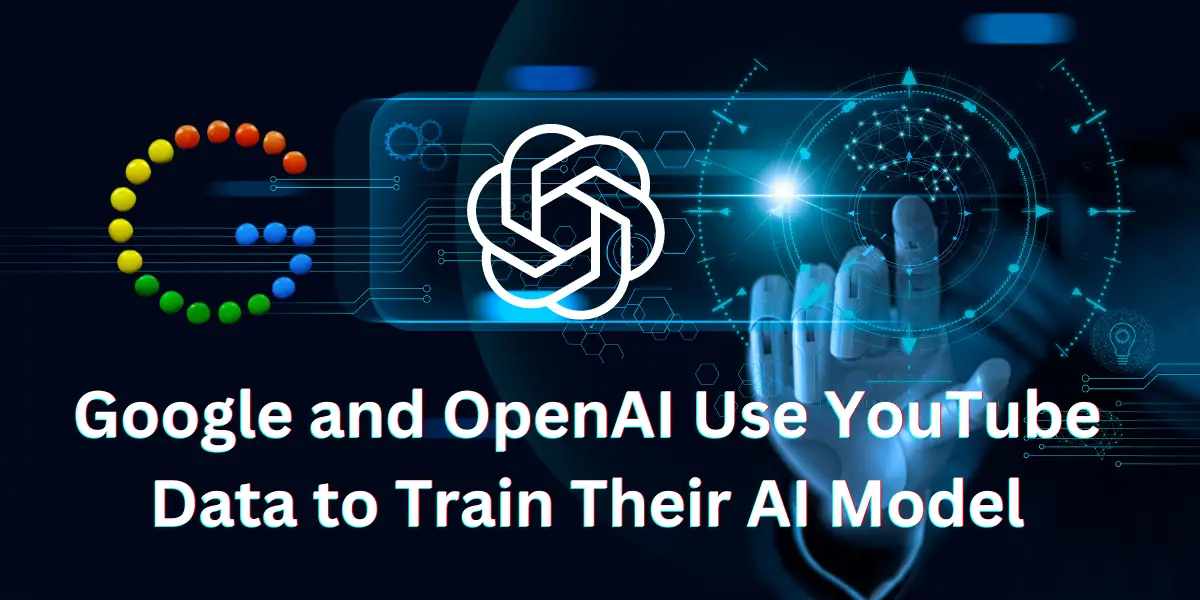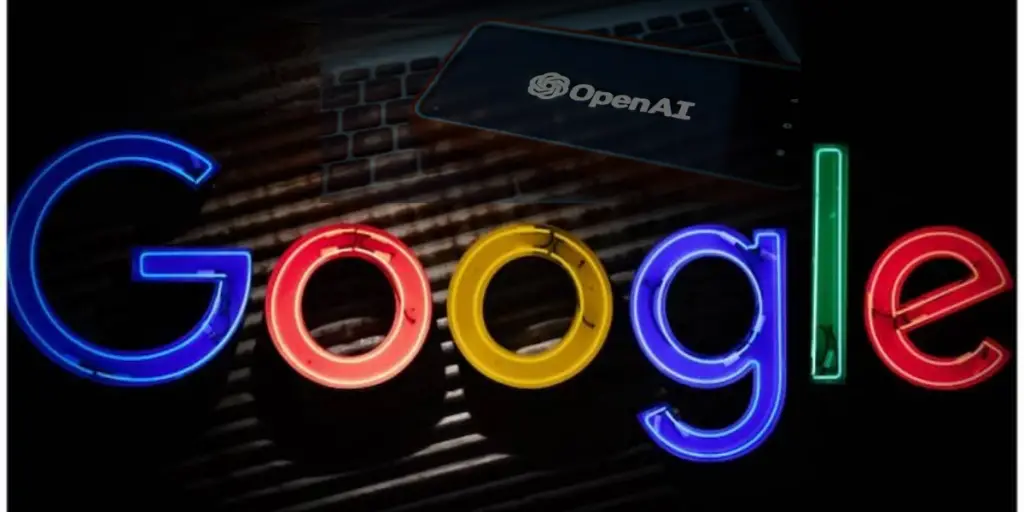Google and OpenAI Use YouTube Data to Train Their AI Model

In a groundbreaking revelation, it has come to light that tech giants Google and OpenAI have been using data from YouTube videos to train their artificial intelligence models. This development raises significant questions about data ethics, privacy, and the boundaries of AI training methodologies.
Table of Contents
What Sparked the AI Training Controversy?
The AI training controversy was ignited by revelations that OpenAI and Google, two prominent players in the AI field, reportedly used transcriptions of YouTube videos to train their AI models. This practice, highlighted in a New York Times report, potentially crosses ethical and legal boundaries by using content that may not have been intended for such purposes. Central to this controversy is the issue of copyright infringement and the privacy of individuals whose content was used without consent. The magnitude of the data involved – more than a million hours of video content – and the lack of transparency in its use have raised serious questions about the boundaries of data utilization in AI development and the responsibility of tech giants in respecting copyright and privacy laws.
How Did OpenAI Use YouTube Videos for AI Training?
OpenAI’s method of using YouTube videos for AI training encompassed several steps:
- Transcribing YouTube Videos: Utilizing its Whisper technology, OpenAI transcribed audio from a substantial collection of YouTube videos, spanning over a million hours.
- Feeding Data into GPT-4: These transcriptions served as a diverse dataset for training their language model, GPT-4.
- Enhancing Language Understanding: The rationale behind this approach was to expose the AI to a wide variety of languages, dialects, accents, and colloquialisms to enhance its understanding and generation of natural language.
- Seeking Linguistic Richness: By tapping into YouTube’s vast content repository, OpenAI aimed to capture the richness and diversity of human communication to improve the model’s performance across different linguistic contexts.
What Role Did Google Play in AI Data Utilization?
In-House Data Utilization
Google, as the owner of YouTube, engaged in parallel practices to OpenAI.
- Internal AI Training: Similar to OpenAI, Google used YouTube videos to collect data for training its own AI models.
- Content Scrutiny and Analysis: The process involved scrutinizing YouTube content to develop and refine Google’s AI technologies.
Policy and Ethical Oversight
The incident brought Google’s content use policies and ethical standards under scrutiny.
- Revising Policies: Post-revelation, Google faced the challenge of aligning its policies with ethical data usage standards, especially concerning content creators’ rights on its platforms.
- Dual Role Conflict: As a custodian of a massive content platform and an AI developer, Google navigated complex ethical and policy-related terrains in this scenario.
Response and Rectification
The controversy necessitated a response from Google regarding its AI development practices.
- Addressing Copyright Issues: Google had to address the potential breach of copyright concerns raised by the use of YouTube content.
- Re-evaluating Data Practices: This situation urged Google to re-evaluate its data practices for AI training, balancing technological advancement with ethical responsibility.
What Are YouTube’s Policies on Data Use?
YouTube, as a massive content platform, has established policies on data use that are crucial in the context of AI development and the recent controversy surrounding data scraping for AI training. These policies are designed to protect the rights of content creators and maintain the integrity of the platform.
Copyright Protection
YouTube’s policy strongly upholds copyright laws. Content creators own the rights to the material they publish on the platform.
- This means that unauthorized use of content, such as scraping videos for AI training without the creator’s consent, is potentially a violation of copyright rules.
- YouTube implements various measures, including automated systems like Content ID, to prevent and address copyright infringement.
Privacy and User Data
Privacy is a cornerstone of YouTube’s policy framework.
- The platform has guidelines in place to safeguard the privacy of its users, which extend to the content they upload.
- This privacy policy governs the use of personal data and restricts the utilization of such data for purposes other than those explicitly permitted by the platform or its users.
Data Scraping and Usage
YouTube explicitly prohibits unauthorized data scraping.
- Its terms of service disallow the extraction of content from the platform for use in external projects, including AI training, without proper authorization.
- This stance is critical in the wake of allegations that tech companies have used YouTube data for AI development purposes.
What Legal Concerns Arise from AI Data Scraping?

The practice of AI data scraping, particularly from platforms like YouTube, raises several legal concerns. These concerns center around the ethical use of publicly available data and the legal implications of such practices.
Copyright Law Infringement
Using content from YouTube for AI training without consent raises significant copyright law concerns.
- Repurposing content without authorization may infringe upon the copyright held by content creators, potentially leading to legal disputes and liabilities.
- The legality of such practices is also subject to the varying copyright laws across different jurisdictions.
Privacy Violations
Data scraping for AI could potentially violate privacy laws.
- If the scraped data includes personal information or content, it might breach privacy regulations like GDPR in the European Union or other similar laws worldwide.
- The use of personal data without consent can lead to legal challenges and significant penalties for the violating entities.
Legal Precedents and Interpretations
The evolving nature of AI and digital content has led to ambiguous legal interpretations.
- Courts and legal systems are grappling with how existing laws apply to AI and data scraping practices.
- The lack of clear legal precedents in some aspects of AI data use adds complexity to these legal concerns.
The legal landscape surrounding AI data scraping is complex and multifaceted, involving copyright and privacy laws and the broader implications of emerging technology on existing legal frameworks. The resolution of these legal concerns will shape the future of AI development and the ethical use of digital content.
How Are Content Creators Affected by AI Training Methods?
The use of AI training methods that leverage data from platforms like YouTube has significant implications for content creators. These impacts are multifaceted, affecting the creators’ rights, revenue, and the overall dynamics of content creation in the digital age.
Copyright and Ownership Concerns
Content creators face challenges related to copyright and ownership when their content is used for AI training without proper authorization.
- They may lose control over how their content is utilized, especially when AI training methods scrape data without consent.
- This unauthorized use can lead to disputes over copyright infringement, as the original creators’ rights may be overlooked in the process of AI development.
Revenue and Monetization Impact
The monetization of content is another critical concern for creators.
- If AI companies use content for training purposes, it could potentially impact the revenue streams of creators, especially if such usage competes with or replaces the original content.
- The lack of compensation for the use of their content in AI training exacerbates these financial concerns.
Creative Integrity and Authenticity
The use of AI training methods also raises questions about the integrity and authenticity of creative work.
- Creators may feel that the use of their content in AI models diminishes the unique value of their original creations.
- There is a concern about AI-generated content overshadowing or diluting the impact of original, human-made creative works.
What Does the Future Hold for AI Training and Data Ethics?
The future of AI training and data ethics is poised at a critical juncture, balancing technological advancement with ethical responsibility. As AI continues to evolve, the need for clear and enforceable data usage policies becomes increasingly paramount. The tech industry is likely to see stricter regulations and guidelines around data scraping and usage, ensuring that AI development is conducted ethically and transparently.
The growing awareness among content creators and the public about data rights and privacy will drive these changes. We can expect more robust systems for consent and revenue sharing, where creators are appropriately compensated for the use of their content in AI training. Additionally, technological innovations might lead to new methods of AI training that are less reliant on large datasets, or that use data in ways that are more respectful of individual rights.
Furthermore, the conversation about AI and data ethics is likely to intensify, with a greater focus on the societal implications of AI technologies. This dialogue will encompass not only the tech community but also policymakers, legal experts, and the broader public. The goal will be to ensure that AI serves the public good, respects individual rights, and promotes a fair and equitable digital ecosystem.
Conclusion

The use of YouTube data by Google and OpenAI for AI training marks a pivotal moment in the intersection of technology, ethics, and law. It brings to the forefront critical discussions about the boundaries of AI development, the responsibility of tech giants in data utilization, and the rights of content creators. As AI continues to evolve, so too must our understanding and regulation of data ethics in this rapidly advancing digital world.
FAQ
Yes, both OpenAI and Google reportedly used transcriptions from YouTube videos to train their AI models. OpenAI employed its Whisper technology to transcribe a significant amount of YouTube content for the development of GPT-4.
The use of YouTube data by OpenAI and Google has sparked concerns over potential copyright infringements, privacy violations, and the ethical use of publicly available data. It also raises questions about the responsibilities of tech giants and the rights of content creators.
Google reportedly altered its privacy policy to encompass the use of publicly available content, including YouTube videos, for AI training. This adjustment aimed to clarify the scope of permissible data usage for AI development within the company’s legal frameworks.

